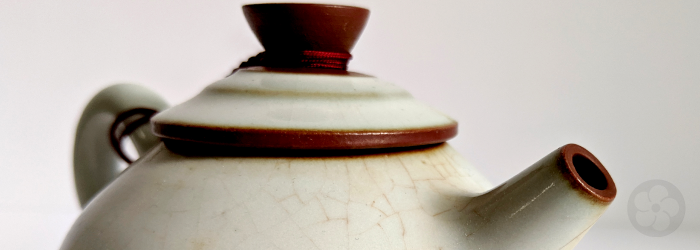Why Does Celadon Crackle?

Celadon is a type of pottery, broadly defined by the type of glaze used. Traditional celadon colors can vary from jade green to cerulean blue, or can even be pure white. Modern celadon glazes include an even wider range, generally including any color that is translucent once fired. But one thing that is consistent across many styles of celadon glaze are a fine web of crackling in the glaze.
Sometimes also called “crazing”, this web is immediately visible in some celadon glazes. In others, it appears nearly invisible at first but gradually develops as the piece is used. Many pottery traditions see it as a flaw, as the tiny fractures compromise the glass-like surface of the fired glaze and become stained over time. Celadon styles, however, celebrate these crackles as an aesthetic blessing. The effect is appreciated particularly in teaware, where the web stains with antimicrobial tannins.
What Causes Crackling?
Crackling occurs when the glaze coating shrinks more rapidly than the clay body during firing. As pottery is fired, loose silica particles tighten and vitrify, becoming dense and glass-like. Clay bodies gain color and plasticity from minor quantities of other substances, but glazes contain a majority of silica, colored with small portions of other minerals. When the silica in the glaze tightens more than the silica in the clay, the glaze is drawn against the piece. As it cools and becomes brittle, it begins to crackle, slowly creating the intricate web that we see on a finished piece.
Depending on the particular combination of clay and glaze, the web of crackles may be tight and small or large and loose. Among our pieces from celebrated celadon artist Xu De Jia, his celadon glazes form a close web on dark clay, but crackle less on his light clay. In new pieces that have no staining yet, these differences can be hard to perceive, but with use, each piece will develop a unique patina. For an even, all-over crackle on a new piece of celadon ware, the pottery can be soaked in a bath of brewed tea, but personally, we prefer to watch the pattern develop over time!
What do you think of crackles in celadon glaze? Let us know in the comments below.
Sign up for our newsletter to get blog updates in your inbox!





Comments on this post (0)